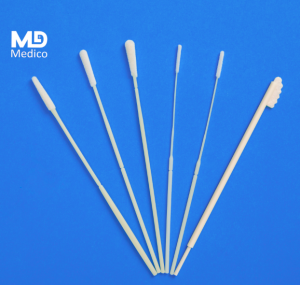1. metodo di raccolta del tampone nasale:
(1) misurare la distanza dalla narice alla radice dell'orecchio con il tampone e segnarla con il dito.
(2) Lascia che la testa del paziente si rilassi naturalmente, attaccare il tampone alla parete della narice e ruotarlo lentamente nella narice del paziente fino al naso e al palato, e poi estrarlo lentamente mentre si pulisce. Con lo stesso tampone, let the swab stay in the nose for 15-30 secondi, and then gently rotate 3 volte. Pulisci l'altra narice allo stesso modo.
(3) Mettere il tampone nel terreno di trasporto del virus, break the swab rod and put it completely in the tube.
(4) Tighten the pipe cover, segnalo, put it in a plastic bag and seal it .
(5) Se è necessario raccogliere da due narici, deve essere utilizzato rispettivamente un tampone. (6) Conservare a 4 ℃ (conservazione a breve termine).

2. Swallow swab collection method:
(1) Ask the patient to gargle with normal saline first.
(2) Put the swab into sterile physiological saline (without penicillin to prevent allergy of patients) for wetting (wet swab can take more cells than dry swab). It is forbidden to put the swab into virus transport culture medium to wet the swab.
(3) With the aid of tongue depressor, the examiner will pass the throat swab over the base of the tongue and reach the lesion of pharyngeal isthmus, and smear it repeatedly for several times (refer to Figure 2). Avoid touching the tongue and oral mucosa when taking it out.
(4) Let the patient’s head slightly upturned, his mouth wide open, and the long sound of “ah” appear, so that the throat tonsils on both sides of the patient are lifted up and down, and then wipe the throat tonsils on both sides of the patient back and forth with a swab for at least 3 volte, and then wipe them up and down on the posterior pharyngeal wall for at least 3 volte.
( 5) Mettere il tampone nel terreno di trasporto del virus, break the swab rod, and put it completely in the tube.
(6) Tighten the pipe cover, segnalo, put it in a plastic bag and seal it.
(7) Store at 4℃ or on ice (conservazione a breve termine).

















